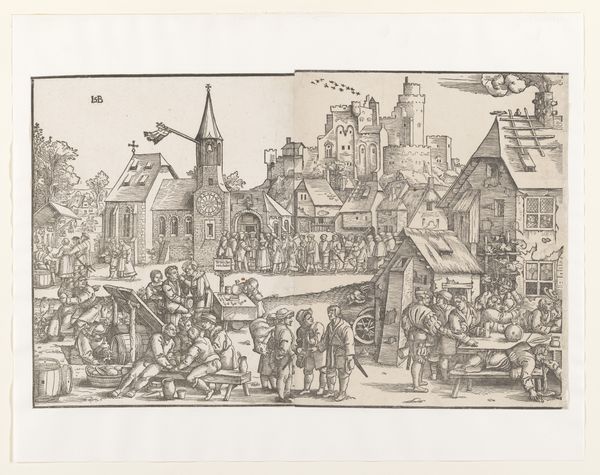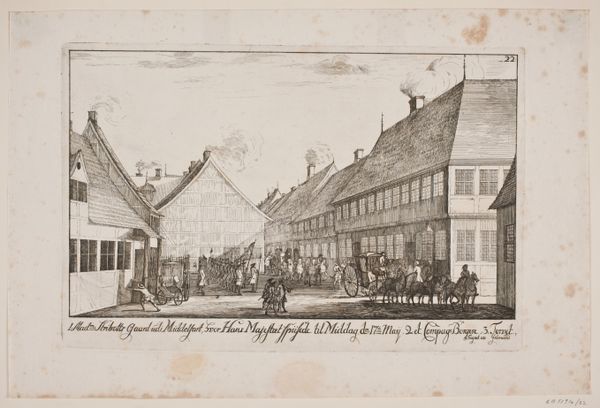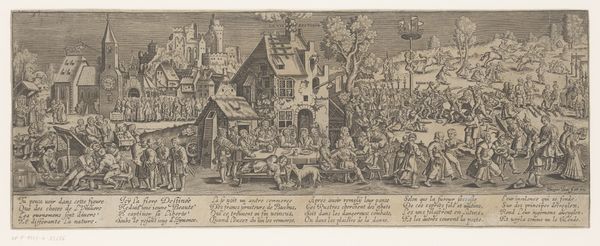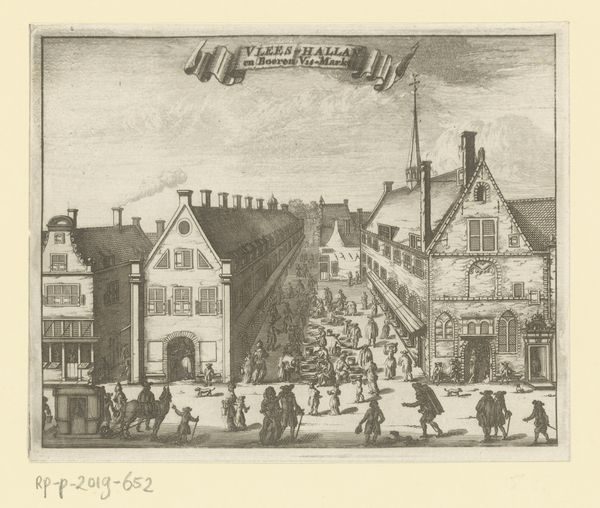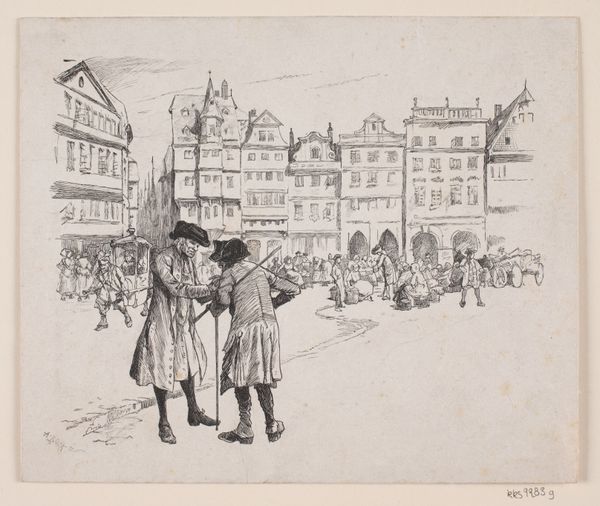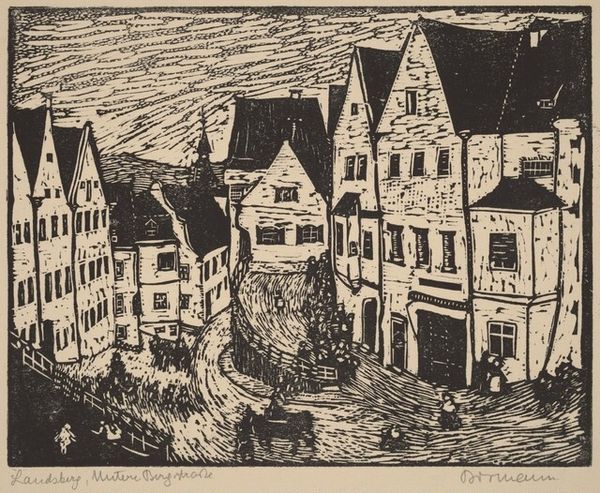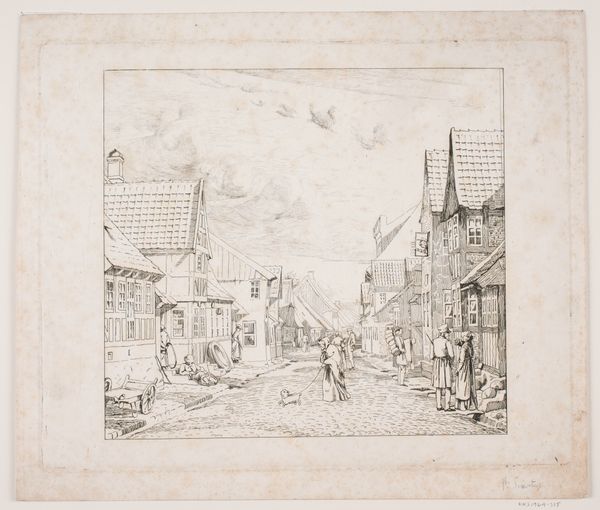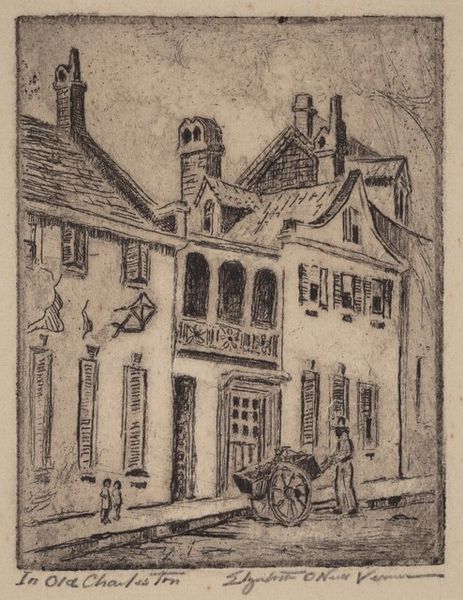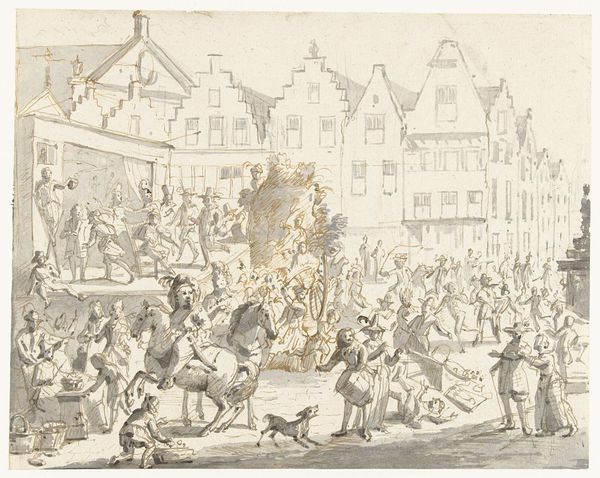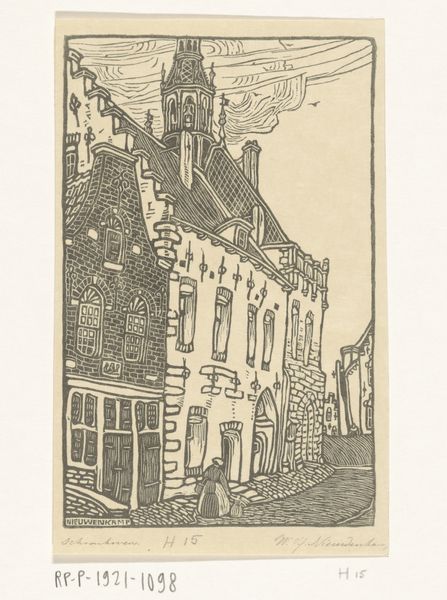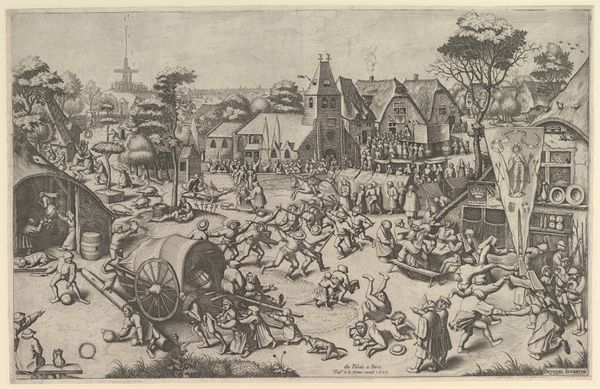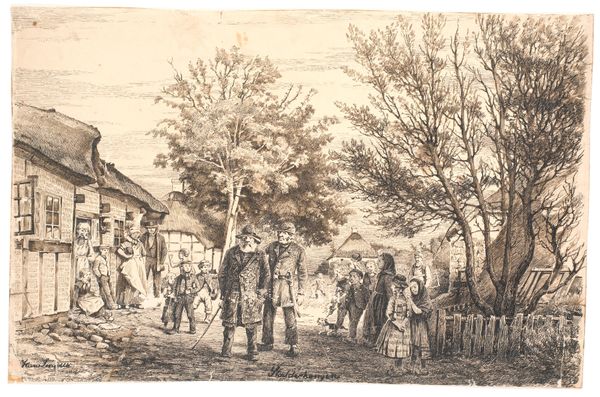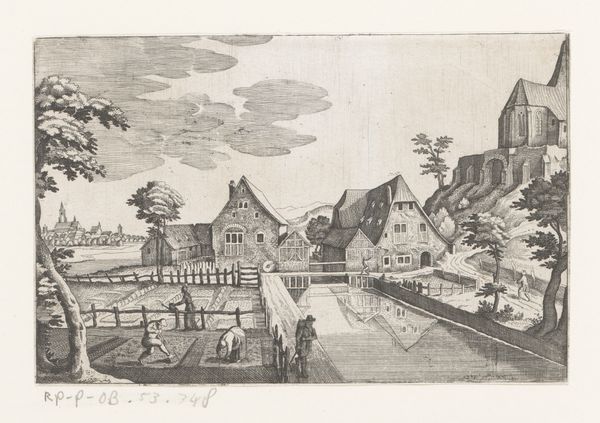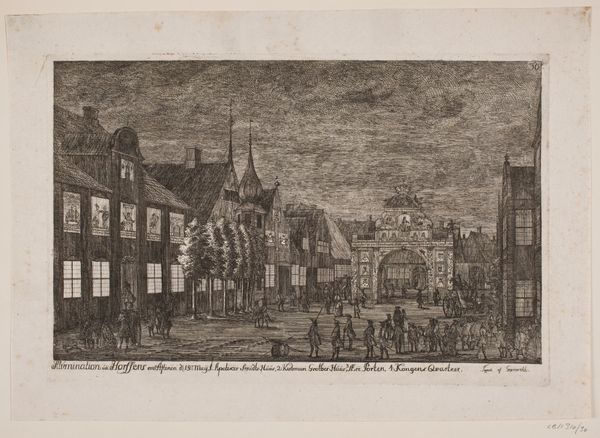
Dimensions: height 166 mm, width 226 mm
Copyright: Rijks Museum: Open Domain
Willem Wenckebach made this print of Poppen laden wagens uit op de markt in Bonbonshuizen using etching, a printmaking technique that relies on the corrosive properties of acid. Wenckebach would have coated a metal plate with a waxy, acid-resistant substance, then scratched his design into the wax, exposing the metal beneath. The plate was then submerged in acid, which bit into the exposed lines, creating grooves. These grooves hold the ink, which is transferred to paper under pressure. The result is a print with fine, crisp lines, well-suited to Wenckebach's whimsical style. This etching captures a market scene, where figures unload carts full of goods amidst the backdrop of Bonbonshuizen. The choice of etching allows for intricate details, bringing to life the scene's bustling atmosphere. Notice the labor involved, with figures actively unloading wares, highlighting the connection between production, trade, and daily life. Consider, then, how Wenckebach's print bridges the gap between fine art and the everyday, inviting us to contemplate the social fabric woven through labor, materials, and place.
Comments
No comments
Be the first to comment and join the conversation on the ultimate creative platform.
